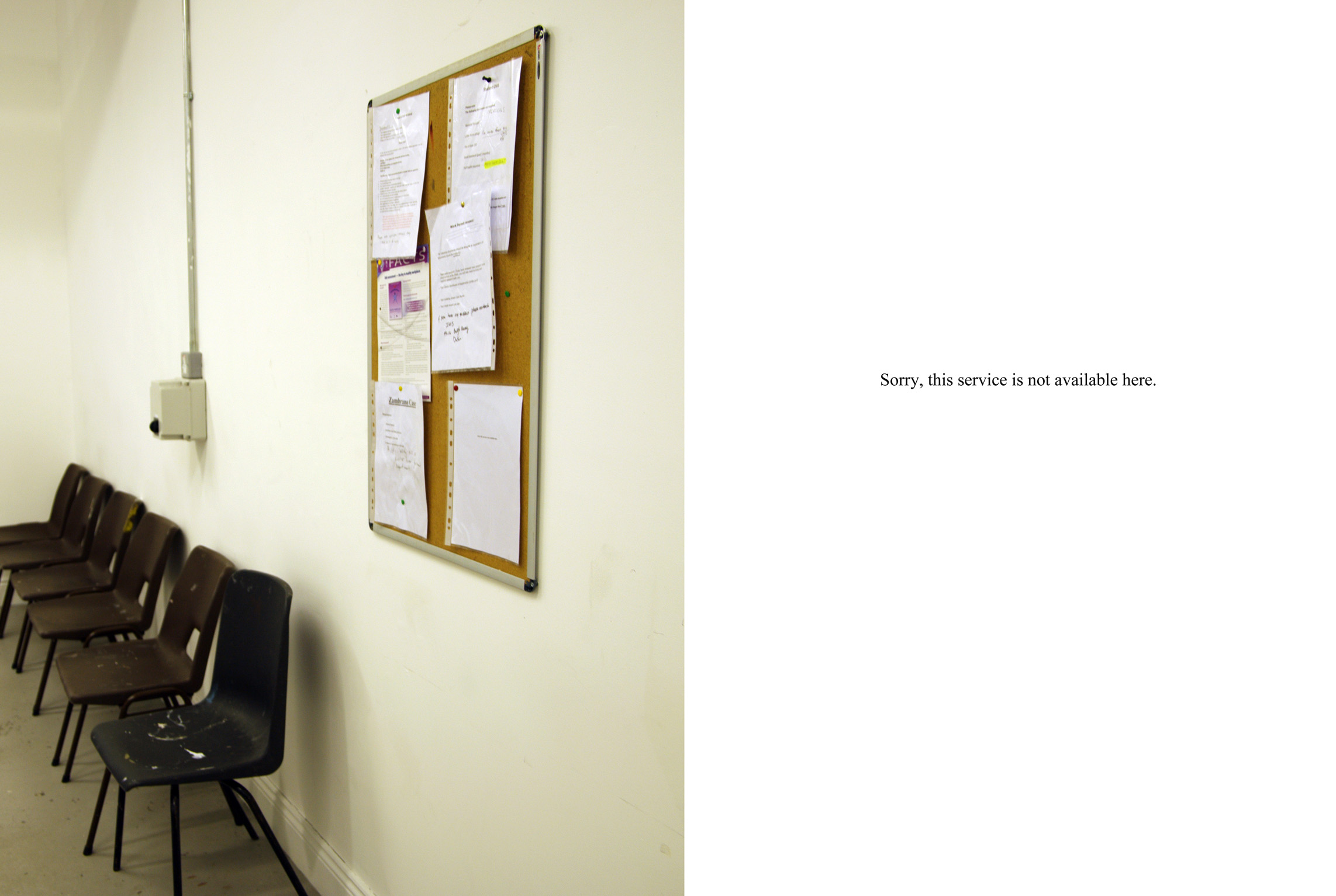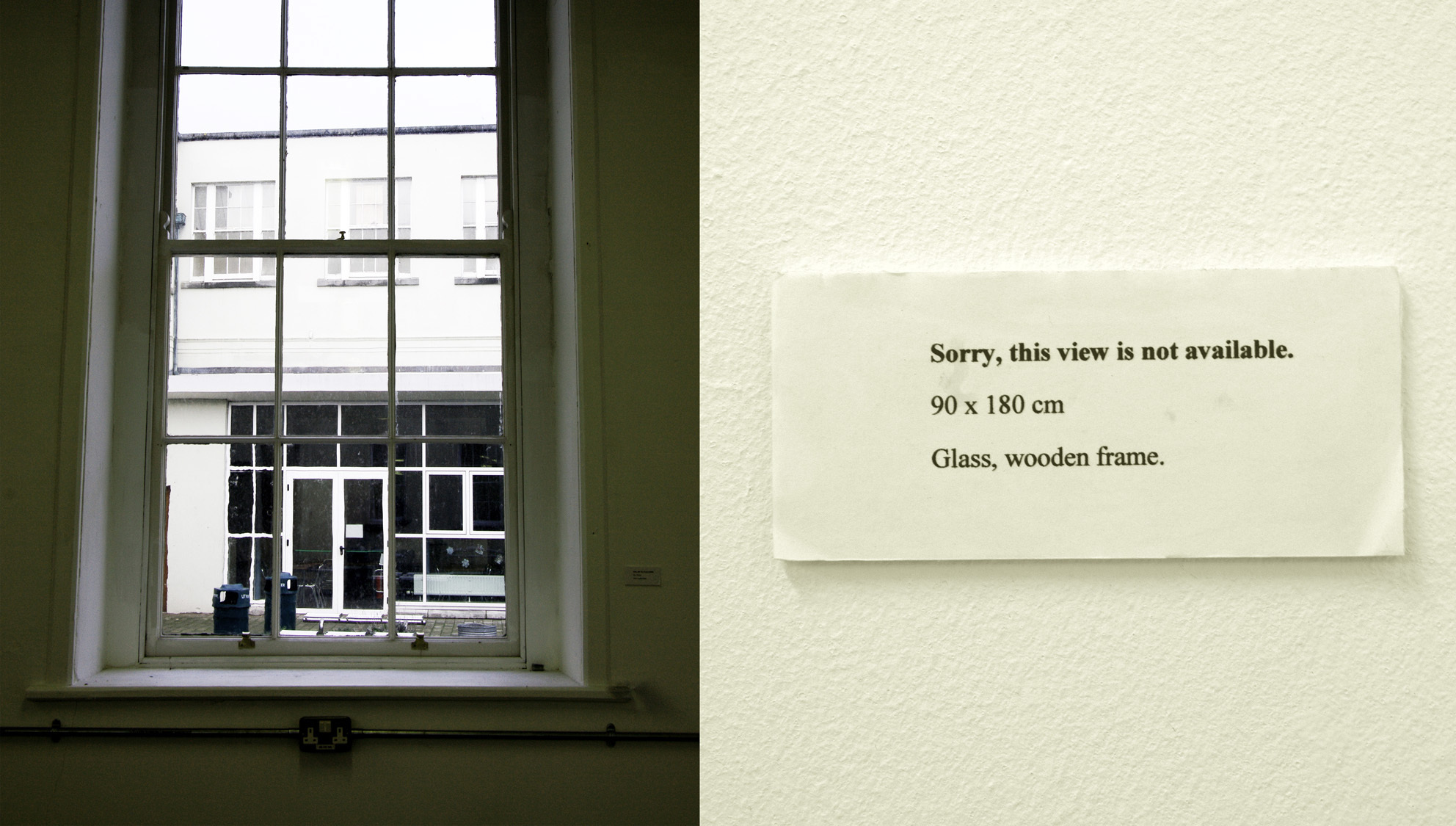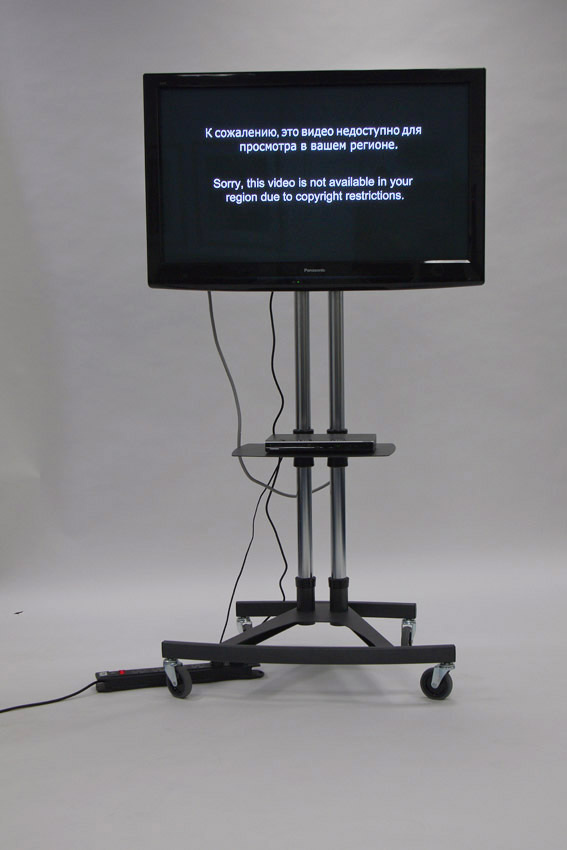Entitled
2012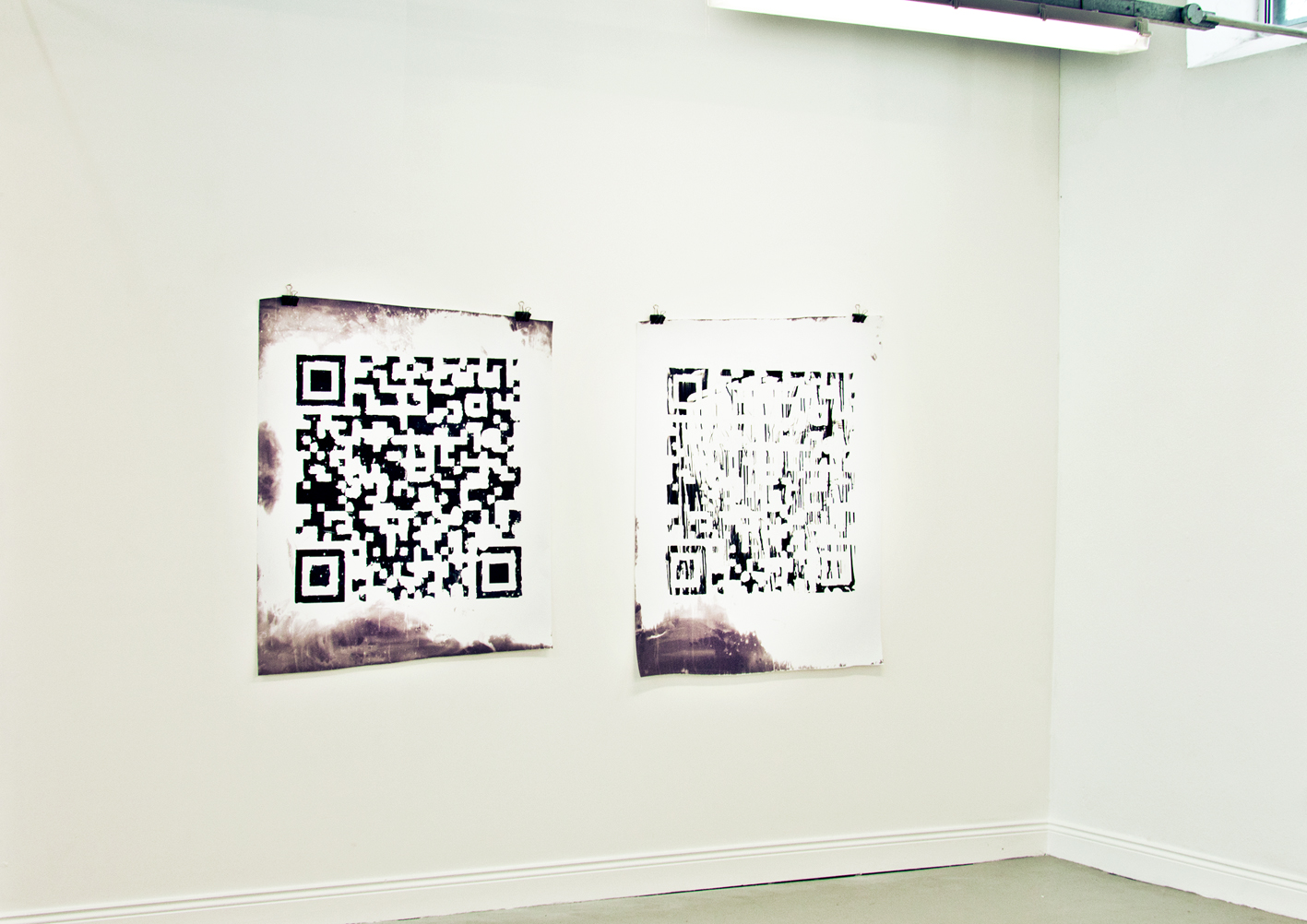
Diptych, Hand printed, Gelatin-Silver print, 130 x 107 cm each
Limerick School of Art and Design Graduate Show, June 2012
This is an interactive artwork where both prints are versions of one image, a computer-generated QR code readable with a digital device. Having been distorted though the manual developing process, one of the prints is scannable while the other one isn’t. Here traditional techniques of the analogue photography are opposed to the recent fascination with interactivity and the physical, cultural and personal restrictions faced in endless choices of today’s world. The piece also intends to challenge the definition of the end product of contemporary art and the multiple possibilities of meaning we are doomed to face when reading an artwork. The concept is influence by the ideas of Kazimir Malevich (1879 – 1935, Russia) who encouraged the abandonment of the representative art form, as well by Peter Weibel (b.1944, Ukraine) who investigates concepts of art, democracy and the global media.
Taking the research in civic-minded street art as well as the science fiction writings of George Orwell and Yevgeny Zamyatin as a starting point, the intention was to apply current communication technology and its vocabulary to the off line space. It is an attempt to insight contemplation of inter-human communication issues and to draw parallels as well as highlight the cause and effect of our preoccupation with the so-called social networking and the substitution of the real with personal electronic communicative devices.
In May 2012 another strand of the project was presented in a art festival called CatDig, curated that year by Lotte Bender in Limerick City.
During the two-day event, things like T- shirts, Hats, Fridge Magnets were given away and also stickers were distributed ,things that frequently made to carry an emblem of a certain team or corporation, things that have no real value but act as advertisement, things that we all like to take for free. Each object carried an image of a QR code, which can be scanned with a smart phone. When scanned, texts such as “This Doesn't Lead Anywhere”, and other phrases to highlight the disappointment of an online detachment would appear on the smart phone screen.
There were also stickers with QR codes placed on the buildings, lampposts and refuse bins on the street.
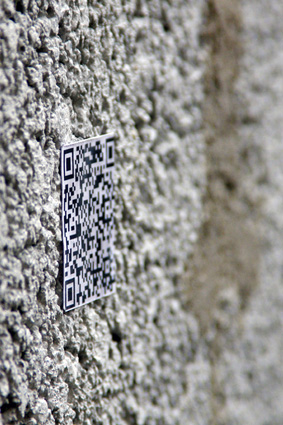 Each item was individually made and possessed a unique code on it, with a unique corresponding sentence. With the intention to distribute as many things as possible, the objects were placed on tables set up in various locations on the street throughout the two days and visibly stated that they were free to take.
Each item was individually made and possessed a unique code on it, with a unique corresponding sentence. With the intention to distribute as many things as possible, the objects were placed on tables set up in various locations on the street throughout the two days and visibly stated that they were free to take.Another strand of the project is a social intervention Vanity Case 2012.
During this project, around 30 handmade labels bearing QR codes were produced, decorated and pinned to clothes in second-hand charity shops in Limerick, which are quite popular amongst the locals, regardless of their income. The idea is that one buys some donated goods and the proceedings go to a specific charity.
When scanned, the codes read
Can you really not afford a brand-new one or does charity make you feel good?
The intention of this piece is to evaluate our relationship with charity shopping, when we get to buy affordable clothing and donate money for charity, kill two birds with one stone so to say. Myself, I’m quite fond of the bargains, even antiques affordable for me due to the ignorance of the volunteer shop assistant. But how good is it really? The artwork questions the mission, the clientele and the necessity of such an establishment.
Do we care what charity it is that we support? Is there any other way to support a charity and lead a sustainable lifestyle? Is it too much to ask? Is it enough? The sentence on the other end of the QR code is quite brutal, but only someone in a possession of quite an expensive mobile device one can read the barcode to see what it says. The juxtaposition of the advances of technology, including the damage the production of the gadgets causes the environment, and the need and the want for charity shops seems absurd.
